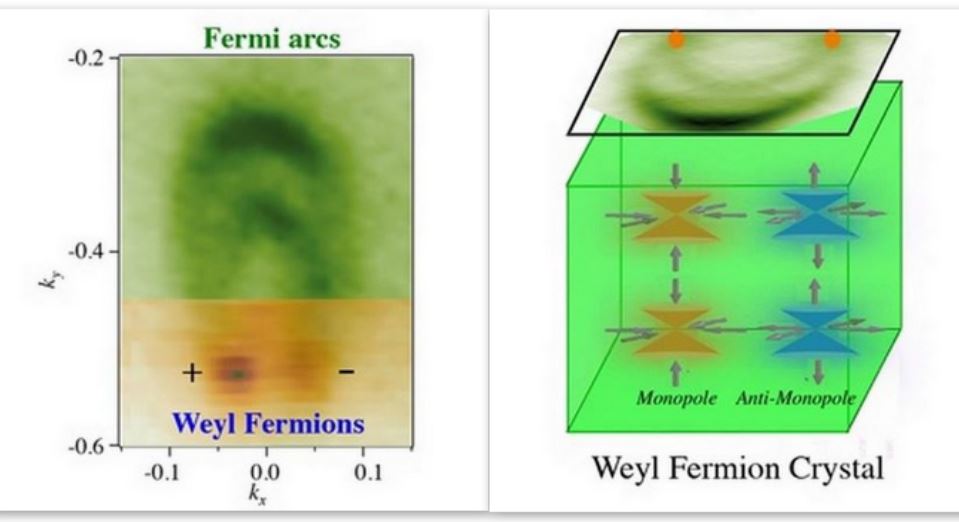Massless Particle Discovered after 85 Years, “Weyl Fermions” Can Change Electronics

It looks as if it has been “the year of revelations.” Just a week ago, scientists at Large Hadron Collider discovered previously hypothesized subatomic particle Quarks, New Horizons sent never seen before images of Pluto and its moon Charon, Robots getting self-aware, and these are just a few.
The research is considered a breakthrough in science and technology because with the unusual properties of Weyl fermions we can create super efficient electronic circuits with nearly free flow of Electricity. The Weyl fermions can conduct electricity much more efficiently than the electrons as they are massless and have a higher mobility.
Discovery of the massless Weyl fermions is important for future because these are unlike other subatomic particles that are formed and discovered after collisions and repeated intesive experiments, such as Higgs Boson in LHC. These were naturally discovered inside a synthetic metal crystal: Tantalum Arsenide.
Another property of Weyl fermions that is of importance is that it posseses spin in both directions as its motion. Therefore, the fermions with opposite magnetic charges can move independently in the crystal, thus, increasing the efficiency of the circuit.
A physics professor M. Zahid Hassan who led the team said:
Hermann Weyl was the colleague of Albert Einstein and proposed his theory of fermions as an alternative to Einstein’s theory of relativity. The theory was proven erroneous, but it provided the base for the antimatter particles in the later equations.
The team had scientists from the prominent universities like Princeton University (who led the research), National Taiwan University and Collaborative Innovation Center of Quantum Matter (Beijing).
The study is really interesting and the future prospects that the researchers have mentioned means this could be a start of even better and efficient technology. The chip size will drastically diminish furthering Moore’s Law, the processors will be more powerful and the energy required will significantly reduce.
With inputs from Science
Subscribe to fossBytes newsletter for more updates and scientific advancements. [newsletter_signup_form id=1]






